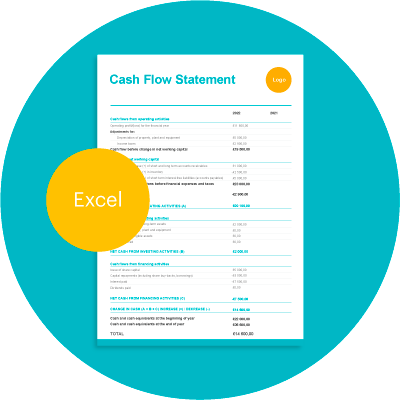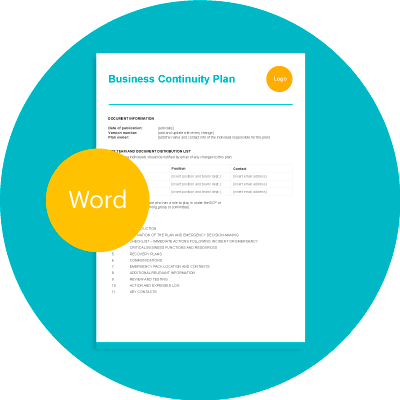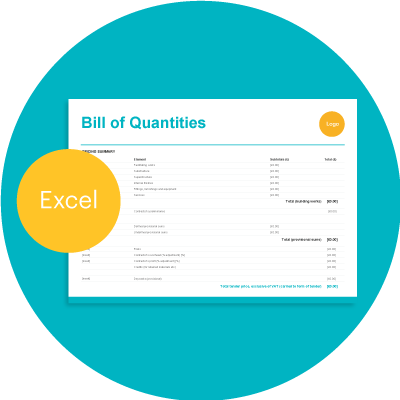Invoicing, bookkeeping & more
With Zervant, you get powerful invoice automation and bookkeeping tools in one intuitive web and mobile app.
Create Free AccountIncome Statement Template
An income statement will tell you how much money your company has made over a period. There are lots of other useful things it can tell you too, but unfortunately, people often view it negatively. Usually because it can take an age to prepare.
To speed up the process and help you out, we’ve put together a free template you can use to create an income statement. We’ve also written this article to help you do this.
Table of Contents
Income Statement Template
Free invoicing and estimate software Create Free Account
Download: Excel
Free invoicing and estimate software
Download: Excel
What is an income statement?
An income statement details the income and expenses of a company over a period. This is usually the company’s financial year.
It’s sometimes referred to as a profit and loss statement or a profit and loss account. This is because it calculates a company’s net profit or loss for the period using the said income and expense figures.
The terms are therefore interchangeable. We’ll use income statement in this article.
What can I use an income statement for?
The information in an income statement can be used in several ways.
1. To understand the performance of the company
Stakeholders can use the information about costs and expenses to understand why the company performed the way it did.
2. To shape business strategy
You can use the statement to make decisions on the future strategy of your business. This will (hopefully!) improve the company’s financial performance. For example, the information can help you identify:
- Expenses or costs that can be reduced
- Operations that should be discontinued due to bad performance
- Where to focus investment, expand capacity or push sales
3. To prepare a cash flow statement
This will help you learn more about the financial health of the company. If you want to create one of these, check out our cash flow statement template.
Tip: Looking for a way to improve your business’s cash flow? Try out our free invoicing software. It lets you create invoices in seconds and notifies you as soon as an invoice is overdue. You’ll be getting paid quicker in no time at all.
How does an income statement fit with other financial statements?
An income statement is usually prepared alongside a balance sheet. This summarises the assets and liabilities of a company on a specific date. The date is usually the end of the period that the income statement covers.
The income and cash flow statement can help you to understand changes from one balance sheet to the next. If you need to prepare a balance sheet, use our balance sheet template.
Do I need an income statement?
Yes. Every company in the UK must prepare an income statement. It forms part of the annual accounts required by Companies House. Meeting your legal obligations is therefore another use of the statement!
The context of the income statement template
Before we look at what’s in our income statement template, we need to give you a bit of context about how we’ve prepared it. This will help you work out whether it’s the right template for you.
We’ll also flag a few things that you should be aware of when you create your income statement. We’ll keep it all as short and sweet as possible though; we promise!
The structure
The structure of an income statement can vary. Different rules on what it should include also apply across the world. This means there are countless income statement templates out there to choose from!
Single-step v multi-step income statements
Two popular structures are the single-step income statement and the multi-step income statement. The single-step structure is more straightforward and calculates one figure. This is the net income for the period.
The multi-step structure includes a more detailed breakdown of a company’s expenses. It also calculates different profit margins, including gross profit and operating profit. See here for more information on the single-step and multi-step income statements. Our template follows the multi-step structure.
UK structural requirements
There are two different formats that you can follow in your income statement if you are a small company in the UK. A small company is one that is not an excluded company (this includes public companies and banking or insurance companies) and meets two or more of the following in a year (a) turnover of not more than £10.2 million (b) balance sheet total of not more than £5.1 million and (c) number of employees not more than 50. For more information see ss 382-384 of the Companies Act 2006. These set out the order of items on your income statement.
Our template follows one of these. The formats are set out in the Small Companies and Groups (Accounts and Directors’ Report) Regulations 2008. Our template follows format 1 of the profit and loss accounts formats in Section B of Part 1 of Schedule 1.
It also includes a column that you must use to enter the amounts of any line items for the preceding period too. This is a requirement of the 2008 Regulations.
Relevant accounting standards
The rules about structure are not the only rules that a company must follow.
There are also extra accounting standards that apply. These set out rules about the contents of company accounts. Their aim is to ensure the accounts are consistent, reliable, transparent and comparable.
For small companies in the UK (see note above for the definition of a small company), the relevant standard is FRS 102. This is prepared by the Financial Reporting Council (FRC). Find more information here. If you’re not a small company in the UK, there will be other accounting standards relevant to you.
Some FRS 102 requirements relevant to the income statement
We can’t cover all the rules of FRS 102 here. It’s over 300 pages long and covers a lot of accounting principles! However, there are two rules relevant to the content of income statements that we will look at.
Include other comprehensive income
The first is the need for a company to either:
- Include any “other comprehensive income” for a period in the income statement, OR
- Prepare a separate statement of comprehensive income to accompany income statement (see Section 5 of FRS 102 for more details)
What does other comprehensive income mean?
Other items of income and expense that arise over the period that are not recognised in profit or loss. The FRC define profit or loss as “the total of income less expenses, excluding the components of other comprehensive income” (see p 316 of the glossary of FRS 102 (January 2022 edition)).
Helpful, right?! There’s no single comprehensive list of other comprehensive income in FRS 102. It’s basically a catch-all term for items that the FRC say (somewhere in FRS 102) must be presented as part of the total comprehensive income.
Some examples include:
- Certain unrealised gains. E.g., gains that arise from foreign currency investments. Or gains that arise following the revaluation of an asset for accounting purposes
- Changes to defined benefit pension plan liabilities
Include information about discontinued operations
The second requirement is the need for a company to separately show information related to operations that the business has discontinued over the period in the income statement.
This information must be shown in a separate column (Section 5.7E of FRS 102). It includes details of any profits or losses made. There is a worked example in the Appendix to section 5 of FRS 102.
What does this mean for you?
If you are in any doubt about whether these requirements apply to your company, you will likely need some specialist advice to help you prepare your income statement.
You’ll also need this advice if you don’t want to spend time getting to grips with FRS 102!
Tip: if you’re thinking about instructing an accountant, you might find our blog on small business accounting helpful. It looks at what they do, and the pros and cons of having one.
Income statement breakdown
It’s time to go through the contents of our income statement template. Need an accounting refresher? You might find our blog on book-keeping basics helpful.
Turnover
The first figure on an income statement is the company’s turnover for the financial period. Turnover is often called revenue or sales revenue. It means, as Simply Business put it, “the total sales made by a business [over] a certain period”.
So, if your company sells goods or products, your total revenue or turnover will be the total amount of sales of the products over the period. If you have a service company, the turnover will be the total amount of fees charged for the services the company provides.
Your turnover figure should be net of any VAT charged (see the definition of “turnover” at p 323 of the glossary of FRS 102 (January 2022 edition)). If you need information on VAT, start with our guide on how VAT works in the UK.
Cost of sales and gross profit
The next line on the income statement is the cost of sales. It’s also known as the cost of goods sold (COGS). What is it?
The cost of sales is the total cost incurred by a company to create the products or services it sold over the period. It does not include:
- The costs of producing unsold products or services
- Indirect costs, such as distribution or administrative expenses (these come later)
So, for a manufacturing business, the cost of sales includes:
- The cost of materials
- The cost of necessary manufacturing equipment
- Direct labour and energy costs
A service business’s costs of sales will likely be smaller, with only the labour costs required to provide the services sold included.
Deduct the cost of sales from turnover to calculate the gross profit (or loss) of the company for the period.
Other expenses
Once the gross profit has been calculated, other indirect expenses are deducted. Our template groups these expenses into types categorised by function.
Distribution costs
The first type is distribution costs. These expenses are more relevant for manufacturing or retail companies.
Administrative costs
The second type is administrative costs. These are basically everything else. As Investopedia put it, administrative costs are:
“Costs incurred to support the functioning of the business but which are not directly related to the production of a specific product or service.”
So, if a cost would be incurred even if the company did not sell anything, it will qualify as an administrative cost. This is assuming it meets any other rules on what is or is not an allowable expense of course.
Examples include:
- Salaries of senior management
- Rent and other overheads
- Costs associated with general supplies such as accounting, legal, office and IT
- Sales and marketing costs
- Utilities and insurance costs
What to do
You only need to give the total value of each expense type, but if you want to give more detail, you can. Do this by including sub-categories on the income statement that itemise the expenses. This increases the transparency and usability of the statement.
A note about depreciation and amortisation expenses
If you need a refresher about what these are, start with Investopedia’s guides to depreciation and amortisation.
There is no separate line on the income statement where you note the value of these expenses. This is because they are used to calculate the value of the expenses we have already discussed.
Instead, you must set out the total value of these expenses in a note to the income statement. We’ve provided an example note in our income statement template. The values can then be used in a cash flow statement too.
Other income
The next line items or rows on the income statement deal with other types of income. This is income that the company received over the period that was not directly generated from the company’s principal business activities. It includes:
- Other operating income
- Income from different types of investments (shares, participating interests, fixed assets)
- Interest receivable and similar income
Other operating income includes rent and other income from property, as well as any government grants or subsidies.
The second type of “other income” typically takes the form of dividends. Interest receivable includes income from cash deposits with a bank.
Amounts written off investments
This is the next line item. It is relevant when a company has an investment that has performed badly. There are many rules surrounding when and how these are dealt with. Specialist advice is recommended to ensure you get it right.
Delete this row from your income statement if it is not relevant to you.
Operating profit before interest and taxation
You can calculate your company’s operating profit before interest and taxation. This is sometimes known as EBIT, which means earnings before interest and tax. It’s often used by investors to compare companies.
Do this by deducting the expenses and adding the other income to the gross profit figure.
Interest, tax and net profit for the period
You can now calculate the company’s net profit for the period. To do this, deduct any interest payable. For example, to a bank to service a loan. This gives you the company’s profit or loss before taxation figure.
Next, show the value of any tax due on the profit. This tax is corporation tax, the company equivalent of income tax and capital gains tax for individuals. This gives you the company’s profit or loss after taxation figure.
The final step is to deduct any “other taxes not shown above”. This line item is not always applicable to every company. An example is withholding tax charged on foreign income. You then have the company’s net profit or loss for the period.
Filling out the income statement
To complete your income statement, follow these steps.
Step 1: Choose your reporting period
Before you do anything else, you need to decide on the period that your income statement will cover. Typically, this will be a financial year.
Step 2: Collate your data
Next, you need to collect the information that you need to enter on the income statement. How you do this depends on:
- How your business manages its finances
- The accounting systems it uses
For example, can you use reporting functions to pull together much of the data with a few clicks? Or do you need to manually collate it from bank statements, receipts and invoices?
Tip: If you fall into the latter category, you might want to try out Zervant’s flexible invoicing software. It’s got loads of reporting tools too, and it’s free to try out.
Step 3: Add the figures to the income statement and calculate profit and tax liabilities
The formulas in our income statement template will do most of the calculations for you. The only thing you’ll need to calculate is your company taxes. Need a bit of help with that? Check out our guides on how tax works in the UK.
Step 4: Take the net profit figure forward into your cash flow statement
Once you have the final net profit or loss figure for the period, you can carry it forward to your cash flow statement for the same period.
Step 5: Distribute your income statement
You need to share the income statement (and the rest of the statements that make up your company’s annual accounts) with the following people:
- All shareholders of the company
- Everyone who can go to the company’s general meeting (typically shareholders and directors)
- Companies House
- HMRC as part of your company’s tax return (per Companies House guidance)
Benefits of an income statement
Forbes identify the following:
- You can use it to calculate your profit margin (and take actions to increase this)
- You can use it as a forecasting tool and monitor results against it
We also think there’s a neglected benefit… It gives small business owners time to reflect. And if the business is performing well, you’ve got the evidence to prove it. It might even help you to relax a bit!
Key takeaways
An income statement is one of the core financial statements of a company. Use it with a cash flow statement and balance sheet to learn about the financial health of your company.
Remember to follow all relevant accounting rules and standards when you prepare it. And if you’re looking for more ways to get on top of your finances, try out Zervant’s free invoicing software and app.
The content and templates on this website are for marketing and general information purposes only and should not be used by any party as a substitute for specific advice of any nature relevant to particular circumstances.


